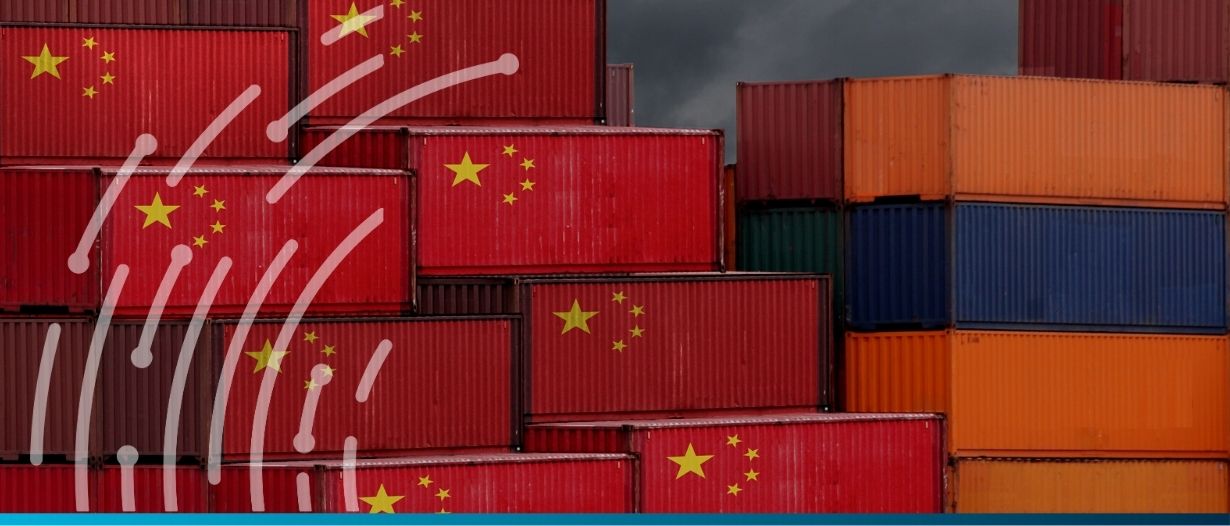Estimated reading time: 3 minutes
China experienced a 7.5% decline in exports in May compared to the previous year, while imports were down by 4.5%, signalling a deceleration in the economic recovery post the lifting of anti-virus measures. This decline can be attributed to the weakening global demand caused by higher interest rates.
According to customs data released on Wednesday, exports dropped to $283.5 billion, reversing the unexpectedly strong 8.5% growth witnessed in April. Similarly, imports moderated to $217.7 billion, showing a more moderate contraction of 7.9% compared to the previous month. Consequently, China’s global trade surplus narrowed by 16.1% to $65.8 billion.
The persistent trade weakness exerts downward pressure on the world’s second-largest economy, which is already grappling with lacklustre factory and consumer activity, as well as a surge in youth unemployment.
Lloyd Chan, an economist at Oxford Economics, commented, “China’s exports will continue to be subdued, as we anticipate a recession in the U.S. economy,” underscoring the potential challenges lying ahead.
Following the lifting of restrictions that had impeded access to major cities and international travel for several weeks, factory output and consumer spending had initially revived. However, forecasters now believe that the peak of this rebound has likely passed.
The recovery of retail spending has been slower than anticipated, with consumers remaining cautious due to concerns about the economic outlook and the possibility of job losses. A government survey conducted in April revealed that a record 20% of young urban workers were unemployed.
Factory activity is currently contracting, leading employers to cut jobs in response to interest rate hikes aimed at curbing inflation in the United States and Europe, which in turn have dampened demand for Chinese exports.
Specifically, exports to the United States plummeted by 18.2% compared to the previous year, reaching $42.5 billion, following the Federal Reserve’s decision to raise its benchmark lending rate to a 16-year high in order to curb surging inflation and slow down business and consumer activity.
Imports of American goods also witnessed a decline of 9.9%, amounting to $14.3 billion. Consequently, China’s politically sensitive trade surplus with the United States narrowed by 21.9% to $28.1 billion.
China’s economic growth expanded to 4.5% year-on-year in the three months ending in March, surpassing the previous quarter’s 2.9%. However, in order to meet the ruling Communist Party’s official growth target of “around 5%” for the year, further acceleration would be required.
Chan highlighted that April’s “disappointing activity data” suggests a loss of momentum in China’s domestic demand recovery following the initial boost from reopening measures.
For the year to date, imports have declined by 6.7% compared to the same period in 2022, reaching just over $1 trillion, while export growth has stagnated. Exports experienced a marginal increase of 0.3%, reaching $1.4 trillion.
In contrast, imports from Russia, primarily consisting of oil and gas, grew by 10% compared to the previous year, amounting to $11.3 billion. Concurrently, exports to Russia surged by 114%, reaching $9.3 billion.
China’s increased purchases of Russian energy serve to capitalise on price reductions, providing crucial support to the Kremlin’s cash flow following reduced purchases by the United States, Europe, and Japan, as a response to President Vladimir Putin’s invasion of Ukraine. As these transactions fall outside the scope of Western sanctions, China has become Russia’s largest export market and an important source of manufactured goods.
In May, China’s imports from the 27-nation European Union experienced a significant decline of 38.6%, totalling $24.5 billion. Similarly, exports to Europe witnessed a contraction of 26.6%, amounting to $44.6 billion. Consequently, Beijing’s trade surplus with Europe narrowed by 3% to $20.1 billion.




























